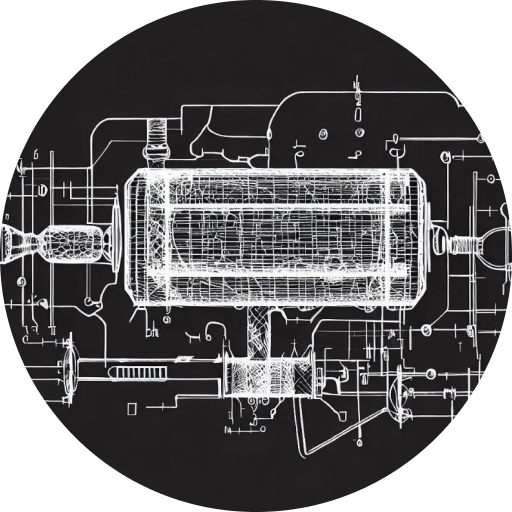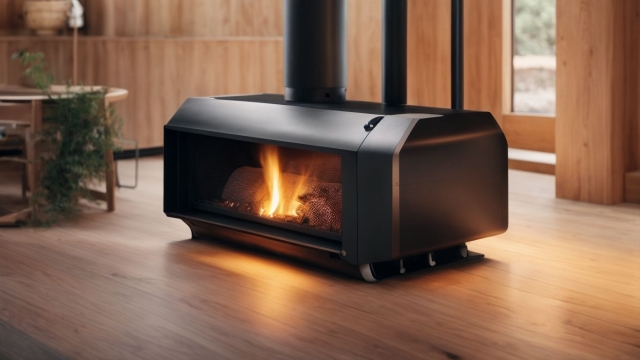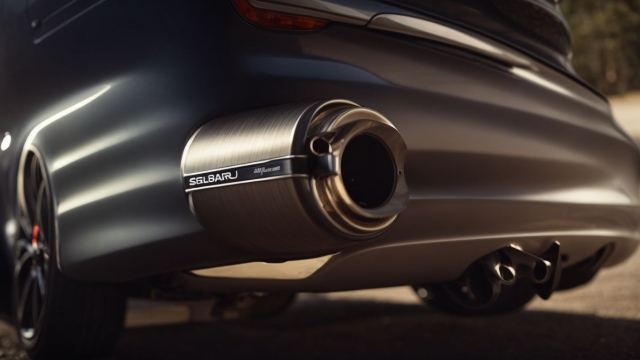The Best Catalytic Converter for Wood Stove – Enhance Heating Efficiency!
.jpg)
Catalytic converters for wood stoves are devices that increase efficiency and reduce emissions. They use a catalyst to convert toxic pollutants into less harmful substances, resulting in better indoor air quality and helping the environment.
The smoke and gases from wood stoves pass through the converter. Inside is a honeycomb-like structure coated with precious metals like platinum, palladium, and rhodium. These metals act as catalysts, speeding up the conversion process. Carbon monoxide and volatile organic compounds turn into carbon dioxide and water vapor.
Installing a converter brings several benefits. It improves air quality by reducing pollution. Plus, it increases energy efficiency as more of the wood’s energy is used.
Catalytic converters have been used in cars since the 1970s. Thanks to technology, they are now used in wood stoves. This provides an eco-friendly solution for both heating and protecting the environment. (Source: Environmental Protection Agency).
What is a Catalytic Converter for Wood Stoves?
A catalytic converter for wood stoves is the answer to harmful emissions. It uses a catalyst to break down pollutants with chemical reactions. This technology has become popular due to air pollution worries.
Wood stoves are known for producing smoke and particulate matter. The converter helps reduce these, converting carbon monoxide, VOCs, and other gases into carbon dioxide, water vapor, and nitrogen.
The unique feature of the wood stove converter is that it can operate at low temperatures. This makes it great for residential use. Plus, it requires little maintenance and can be easily installed.
Using a converter in a wood stove system reduces air pollution and complies with local regulations. Enjoy the warmth of a cozy fire and help the environment by investing in a catalytic converter.
Choosing the Right Catalytic Converter for Your Wood Stove
Catalytic converters are key for cutting down emissions from wood stoves. Choosing the right one is very important for great stove performance and minimized environmental impacts. Here are some aspects to bear in mind when selecting a converter:
- Efficiency: Get a converter with high efficiency ratings for successful burning of gases and particles.
- Size: Match the converter size to the stove output for proper air flow and combustion control.
- Temperature range: There are converters for certain temperature ranges. Pick one that fits your stove’s temperatures.
- Durability: Opt for a converter made of tough materials like stainless steel or ceramic, for longevity and rust-resistance.
- Maintenance: Some converters need frequent cleaning or replacing. Consider the maintenance needs and added costs.
The history of catalytic converters for wood stoves starts in the 1980s, due to increasing worries about air contamination from burning wood at home. Early designs had issues like short life span and decreased efficiency over time. But, technology advances have improved their performance, making them more dependable and effective at reducing emissions.
Step-by-Step Guide to Installing a Catalytic Converter for Wood Stoves
Installing a catalytic converter for wood stoves can be a tricky task. To make it easier, here is a simple guide:
- Cool the stove: Make sure the wood stove is cold before you start. Remove any ashes or junk inside.
- Find the spot: Look for the ideal place to install the converter. Refer to the manual for instructions – each model may vary.
- Install: Carefully attach the converter where it should go. Ensure it is secure and properly aligned.
- Test it: Ignite a small fire in the wood stove and watch how it burns. Smoke or too much heat is a sign of an issue.
These steps will help you install the catalytic converter correctly, making your wood stove more efficient and decreasing emissions.
Also, keep in mind that cleaning and maintenance are necessary for your converter to work optimally for a long time.
When I installed my own converter, I faced space issues. But with some creative solutions, I was able to fit it in and finish the job.
Installing a converter is not only good for your wood stove, but also helps conserve the environment by reducing air pollution. So don’t delay – get to work!
Maintenance and Care for Catalytic Converters
When caring for catalytic converters in wood stoves, here’s what to keep in mind:
- Regularly inspect and clean.
- Look for damage such as cracks or holes.
- Check the operating temperature.
- Use only dry, seasoned wood.
- Follow manufacturer instructions.
- Seek professional help if needed.
Also, regular maintenance extends the converter’s life and helps reduce emissions. Neglecting care can lead to reduced efficiency and pollution.
Frequently Asked Questions about Catalytic Converters for Wood Stoves
Wood stove catalytic converters are a hot topic for homeowners. We’ll address some common questions with this handy table. It has up-to-date info to give you reliable answers.
| Q: What is a catalytic converter? |
|---|
| A: It’s a device that reduces emissions from wood stove combustion. |
| Q: How does it work? |
| A: It uses a catalyst to turn bad substances into less toxic compounds. |
| Q: Are catalytic converters compatible with wood stoves? |
| A: Yes, most modern stoves can accommodate them. |
| Q: Do I need one for my wood stove? |
| A: Not required, but it can increase efficiency and reduce environmental impact. |
| Q: Can I install one after buying a wood stove? |
| A: Many wood stove makers offer compatible catalytic converters as accessories. Check with the manufacturer or an expert before installing. |
| Q: How often do I need to replace it? |
| A: It depends on usage and maintenance, usually every 2-5 years. |
It’s also important to maintain and clean your catalytic converter regularly for longer life. Refer to the manufacturer’s guidelines for specific care instructions.
Invest in a catalytic converter for a cleaner combustion and reduced emissions. It’s a great way to make your home and planet healthier. Act now!
Conclusion and Final Thoughts
Let’s explore our final thoughts on the concept of a catalytic converter for wood stoves. This tech enables the conversion of pollutants into less dangerous substances. It offers a sustainable approach to heating homes. It reduces environmental contamination and conserves natural resources. Plus, it minimizes the release of toxic byproducts, making life easier for those with respiratory issues. It’s also accessible and cost-effective, as it can be retrofitted into existing wood stoves.
The introduction of catalytic converters for wood stoves is a major advance in sustainable heating tech. It promotes cleaner air quality and helps us reduce our ecological footprint. The idea first arose from efforts to address air pollution and promote eco-friendly practices. Research and development led to prototypes that highlighted the potential for these devices to revolutionize traditional wood burning. Now, manufacturers and consumers alike recognize the advantages. Catalytic converters for wood stoves are key in paving the way for a more environmentally conscious future.
- Upgrade Your Honda Accord with the Best Catalytic Converter for Enhanced Performance - October 30, 2023
- Boost Your Chrysler 300’s Performance with a High-Quality Catalytic Converter - October 30, 2023
- Enhance Your Jeep Liberty Performance with a Catalytic Converter - October 30, 2023









